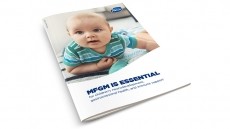Report examines label reading priorities and obstacles
priorities for most consumers when reading product labels,
according to a new report.
Published by The Hartman Group, Label Reading from a Consumer Perspective reveals that American consumers are increasingly reading product labels as part of a general lifestyle move towards health.
The new report examines the relevance, usefulness and effectiveness of information on labels.
It also looks at the level of consumer awareness, their familiarity and their trust of a number of different symbols used in today's marketplace.
"Consumers are doing more than just glancing at labels, they are actually reading them," stated the report.
Nevertheless, people still report difficulties in understanding the information displayed, which highlights the need for a clearer understanding of the needs of label-readers, states the report.
Hartman research found that 28 percent of US consumers are reading labels "much more frequently" today than one year ago.
Another 31 percent are reading labels "slightly more often".
This indicates that the majority of consumers take label reading seriously, said the report.
"Now we see large groups of consumers adding 'label reading' as part of health and wellness lifestyles and their attempt to try and comprehend 'what's in the box.'
In the area of food and beverages, across consumer segments, label reading appears to be a strong habit that is increasing in intensity."
Out of the 16 label components tested, the group found that the expiration or 'sell by' date of products was the most frequently checked component of a product label, checked by 60 percent of consumers.
The nutrition facts panel, which lists a products' nutritional components such as calories and fat, is checked by 50 percent of Americans.
Freshness dates or 'made on' dates come a close third, with 49 percent of people actively seeking these out.
Ingredients lists are checked by 47 percent of people.
However, despite this obvious growing interest to understand label information, consumers often find the task confusing.
This is partly because marketers are so keen to flag up the nutritional aspects of their products that labels become "a jumbled and chaotic world of information".
As well as the nutrition facts panel and ingredients lists, labeling components also include country of origin statements, product narratives and nutrition symbols designed to inform and educate consumers.
But bombarding consumers with too much information can often have the opposite effect than that intended, with people not knowing where to first look to receive the information they are looking for.
According to Hartman, many shoppers expressed frustration with locating the information they were looking for on a label.
In addition, consumers reported difficulties in deciphering elements on the nutrition facts panel because of variations in product properties in relation to serving size that may vary by product type, brand or category, Another difficulty reported was the small font size of ingredients lists.
The US Food and Drug Administration sets a minimum font size requirement of 1/16 inch in height.
And because most marketers stick to the minimum requirement, many consumers, particularly the aging population, have difficulties reading the information.









